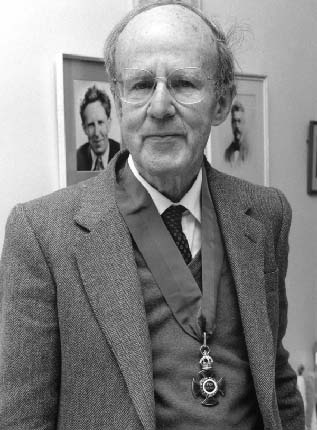|
'One of the men who shared the Nobel Prize in 1961 for the pioneering x-ray crystal structure analyses of myoglobin and hemoglobin, M. F. Perutz of Cambridge, has characterized this as the Matthew Effect: "For to every one who hath, will more be given, and he will have abundance; but from him who hath not, even that which he hath will be taken away." (Matthew 25:29) These two globular protein molecules are nearly all a-helical. In other such proteins, the chain is folded in a less regular manner, and several nearly parallel extended chains can be cross-linked by hydrogen bonds to form a sheet resembling a small region of silk. Such a silklike sheet often acts as the central core of a globular protein, with a helices packed against it on either side to form a compact molecule. We will discuss protein structures again in Chapter 24 and see three enzymes that have very little a-helical structure. Right: Max Perutz, who shared the 1962 Nobel prize in chemistry
with John Kendrew. (Photograph from the MRC, Laboratory of Molecular
Biology, Cambridge, UK.) |
|
